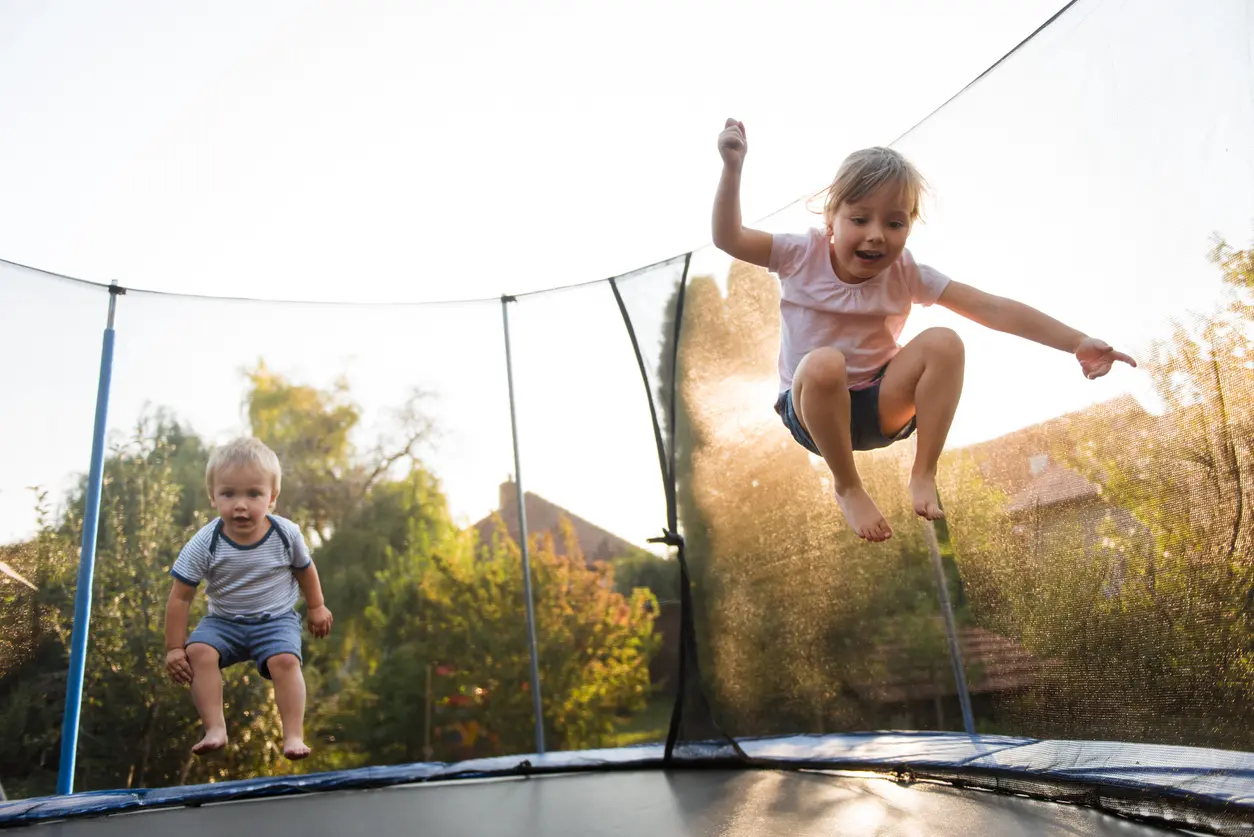Introduction to Trampoline Sales: Finding the Perfect Fit
Choosing the right trampoline for your family is more than a quick purchase; it’s about safety, quality, and making sure you get the best bang for your buck. Sales are tempting, but don’t let a low price tag fool you. Not all trampolines are made the same. You want one that will last, keep your kids safe, and not turn into an eyesore in your backyard after a few months. Start by considering size – how much space do you have? Bigger isn’t always better if it takes over your whole yard. Then think safety features like enclosures, padded springs, and sturdy frames. These are non-negotiable. Remember, a good trampoline will cost more upfront but think of it as an investment in safety and durability. Don’t cut corners. Lastly, check reviews and safety certifications. These insights can save you from a regretful buy. Make a wise choice, and you’ll have a backyard hit that keeps the kids active, safe, and happy.
Understanding the Different Types of Trampolines Available
When you’re looking to buy a trampoline, you’ll find there are three main types out there: round, rectangular, and square. Each one brings something unique to the bounce. Round trampolines are what most backyards have. They’re great for keeping the jumper safely in the center because of the way they spread the bounce force evenly. They’re a top pick for families and casual jumpers. Rectangular trampolines give that strong, Olympic-kind of bounce and are preferred by gymnasts and athletes. They provide a more even distribution of tension across the surface, making those high precision jumps possible. Square trampolines mix a bit of both worlds, offering a sturdy bounce with a bit more room to move around than the round ones, making them a hit for those with spatial constraints but still looking for performance. Picking the right type means thinking about your space, who’s jumping, and how serious about bouncing they are. Each shape supports different activities and skill levels, so consider this when making your choice.
Key Features to Look for When Buying a Trampoline
When buying a trampoline, you want to make sure you’re choosing one that’s fun but also safe for your family. Here’s what to keep an eye out for. Size matters. Bigger isn’t always better, especially if your yard is small. But you’ll need enough space for kids to bounce freely. Safety nets are a must. They prevent falls and injuries. Make sure it’s sturdy and tight. Spring quality is another big thing. Rust-resistant springs that are covered to protect bouncers are what you’re after. Weight limit is also crucial. The trampoline needs to handle the weight of everyone who will use it, so check this carefully. Lastly, look for durable materials. Weather-resistant and UV-protected materials will make your trampoline last longer. Remember, safety first, but have fun choosing the right trampoline for your family.
Safety First: What Makes a Trampoline Safe?
When hunting for a trampoline, safety isn’t just a word—it’s everything. To ensure you bring home a trampoline that keeps fun times safe, pay attention to a few critical areas. First, look for a trampoline with a sturdy safety net. This isn’t optional; it’s a must-have to catch anyone who loses their balance. Next, check the frame. A solid, rust-resistant frame means a trampoline can handle wear and tear without giving way. Padding is another non-negotiable. The springs and edges of the trampoline should be well-cushioned to prevent injuries from falls or bumps. And size does matter. Opt for a trampoline that fits your space with plenty of room around it to avoid collisions with fences or other objects. Lastly, consider weight limits. Overloading a trampoline is asking for trouble. Stick to the recommended weight to keep everyone bouncing safely. Remember, a trampoline that ticks these boxes isn’t just a good buy—it’s a guardian of good times.
Size Matters: Picking the Right Trampoline for Your Space
Size is crucial when you’re choosing a trampoline. It’s not just about how much bounce you want. You have to consider the space you have. A big trampoline in a small yard? Not a good idea. You need room around it, too, for safety. Here’s the deal: for small yards, go for trampolines that are 8 to 10 feet in diameter. They’re good for a kid or two. Have more space and more kids? Look at trampolines that are 12 to 14 feet. These can handle more fun and more jumpers. Safety first, though. Make sure there’s at least 6 feet of clear space around your trampoline. This buffer zone keeps jumpers from a bad fall. So, measure your yard before you buy. Thinking kapow, where to jump? Start with how much space you’ve got.
The Importance of Weight Limits in Trampoline Selection
When picking a trampoline, weight limits are a big deal. They’re not just a number. They keep you safe. Every trampoline has a max weight it can handle. Going over this limit puts extra stress on the trampoline, leading to wear, tear, or worse, a dangerous break. If your trampoline’s for multiple jumpers, add their weights together. Make sure this number is under the trampoline’s max limit. It’s simple: picking a trampoline within the right weight range means fun and safe bouncing for everyone. Ignoring this can lead to accidents or a busted trampoline. So, check the weight limit before you buy. It’s a small step that makes a big difference in safety.
Enclosures and Padding: Extra Safety Measures to Consider
When picking a trampoline, think safety first. Enclosures and padding aren’t just extras; they’re must-haves. Enclosures, or safety nets, keep jumpers from bouncing off and getting hurt. Most trampolines come with them, but make sure yours does. They’re a game-changer in preventing injuries. Padding covers the springs, edges, and frame, shielding jumpers from hard metals and reducing injury risks if they fall. Always check the quality. Flimsy padding is no good; you want thick, durable material that can take a beating and still protect your family. Investing in these safety features means more fun and fewer worries.
Installation Tips: Proper Setup for Maximum Safety
When setting up a trampoline, safety is not negotiable. It starts with picking the right spot. Find a level, clear area away from trees and fences. Soft, shock-absorbing ground like grass is your best bet. Avoid concrete or asphalt. Not only will you reduce injury risk, but the trampoline itself will last longer. Make sure there’s plenty of space around it, too. Experts recommend at least 3 meters of clear space on all sides. When assembling, follow the manufacturer’s instructions to the letter. Don’t skip parts or take shortcuts. Each component plays a critical role in overall safety. Check that all parts are tight and secure before any jumps. Regular maintenance is part of safe trampoline usage as well. Inspect it often for tears, rust, and loose fittings. Remember, a well-installed trampoline is the foundation to countless hours of fun and exercise for your family. But, do it right or don’t do it at all. Safety first, always.
Maintenance and Care: Keeping Your Trampoline Safe Over Time
To keep your trampoline in top shape and safe for everyone, there’s some stuff you need to do regularly. First, always check the mat and net for any holes or tears. A small rip can quickly turn into a big problem if ignored. Next, the springs. These should be tight and rust-free. Loose or rusty springs are a no-go; they can mess up the bounce and be dangerous. Also, keep the frame clean and check for rust. If you spot any, deal with it fast to prevent weakening. Remember, a shaky frame is a recipe for trouble.
The area around your trampoline needs attention too. Keep it clear of toys, garden tools, or any junk that could hurt someone if they fall. Speaking of falls, make sure those safety pads stay on. They protect jumpers from the springs and frame, which can cause injuries if exposed.
Lastly, when bad weather hits, be prepared. Heavy wind can turn a trampoline into a flying hazard. Anchoring it down or storing it away can save you a lot of headaches. And, in winter, remove snow to avoid the mat stretching or tearing under the weight.
Just like anything else fun, trampolines need looking after to keep the good times rolling safely. Keep up with this, and your trampoline will be a hit with the family for years.
Conclusion: Balancing Fun and Safety in Your Trampoline Purchase
Choosing the right trampoline for your family is more than just picking the biggest one or the cheapest option. It’s about finding that perfect balance between fun and safety. Remember, a good trampoline offers endless hours of energetic play, but only if it keeps everyone safe while doing so. Look for trampolines with strong frames, durable safety nets, and padding that covers all springs and edges. Prioritize models with safety certifications and good user reviews. And don’t forget to consider your space – make sure the size fits your yard without cramming it. Ultimately, investing a bit more in a safer option means peace of mind, making those higher jumps worth every penny. So, make safety as much a priority as fun, and you’ll have a winning combination for your backyard adventures.





